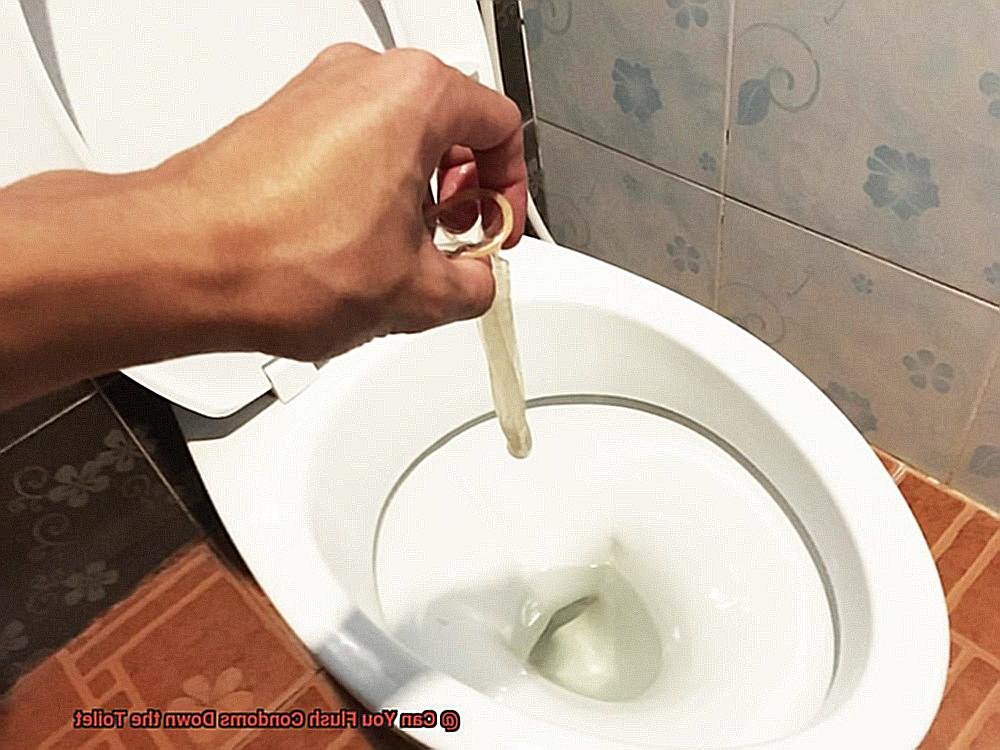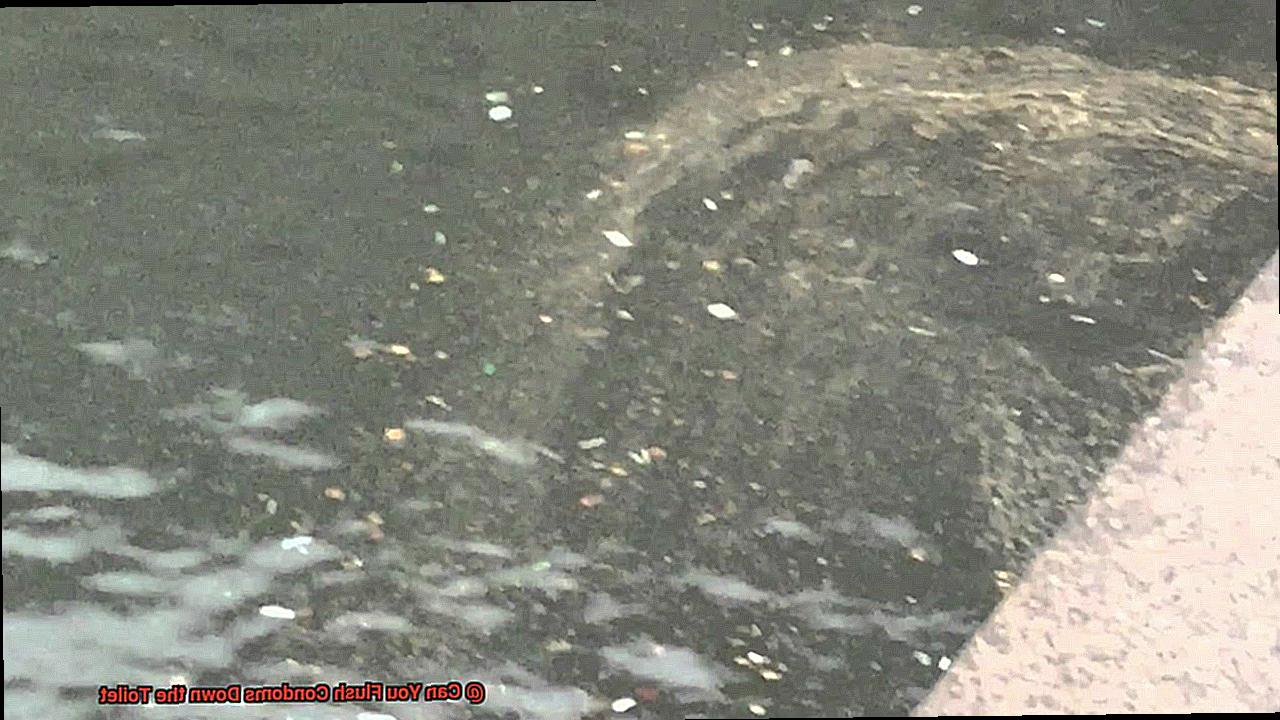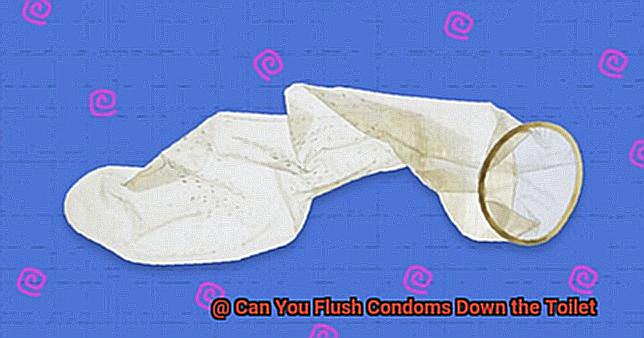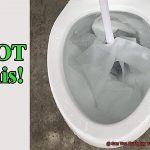Have you ever been in a sticky situation where you need to dispose of a used condom but have nowhere to toss it? It’s an all-too-common dilemma, especially when you’re out and about and there’s no trash can in sight. But before you make the mistake of flushing your condom down the toilet, think twice.
In this article, we’ll tackle the burning question of whether or not it is safe to flush condoms down the loo. We’ll dive into the science behind condom materials and their impact on plumbing systems. Plus, we’ll discuss how flushing condoms can harm our environment by ending up in our waterways and affecting aquatic creatures.
But wait – there’s more. We’ll also offer alternative ways of disposing of condoms that are both safe and sanitary. From using a condom receptacle to wrapping them in tissue before throwing them away, we’ve got you covered. And we’ll explain why proper condom disposal isn’t just important for cleanliness reasons, but also for public health.
So, let’s get started.
Contents
- 1 What Are Condoms Made Of?
- 2 Why Flushing Condoms Down the Toilet Is Not Recommended
- 3 The Consequences of Flushing Condoms Down the Toilet
- 4 How to Dispose of Used Condoms Safely
- 5 Environmental Impact of Flushing Condoms Down the Toilet
- 6 Alternatives to Flushing Condoms Down the Toilet
- 7 Conclusion
What Are Condoms Made Of?

Condoms are typically made of latex, a type of rubber that is derived from the sap of the rubber tree. This material is stretchy, flexible, and strong, making it an ideal choice for safe sex.
But what about those who have a latex allergy? Fear not. Non-latex condoms made from materials like polyurethane or polyisoprene are available as alternatives. While they may be less elastic than latex condoms, they are still effective at preventing unwanted pregnancies and sexually transmitted infections.
It’s important to note that caring for your plumbing system and the environment go hand in hand. Flushing used condoms down the toilet can cause major plumbing problems and harm wildlife and marine life. To dispose of used condoms properly, wrap them in tissue or paper and throw them in the trash.
Why Flushing Condoms Down the Toilet Is Not Recommended
When it comes to safe sex, condoms are a must-have. They protect against unwanted pregnancies and sexually transmitted infections while enhancing intimacy and pleasure. But did you know that flushing used condoms down the toilet can cause serious problems? Here’s why you should never flush condoms down the toilet.
Firstly, condoms are not biodegradable. Unlike toilet paper or other materials, they are made from strong, stretchy materials that can last for decades. When flushed down the toilet, they can easily get caught on rough surfaces or bends in pipes, leading to blockages that prevent water from flowing smoothly through the plumbing system.
These blockages can worsen over time and cause other plumbing problems such as leaks and water backups. In severe cases, costly repairs or replacement of plumbing systems may be necessary.

In addition to causing plumbing problems, flushing condoms down the toilet can harm the environment too. Condoms contain chemicals and additives that are harmful to marine life when they make their way into waterways and oceans. This impacts not only aquatic animals and plants but also the delicate balance of our ecosystem.
So what should you do instead? The answer is simple: dispose of used condoms in the trash. Wrap them in tissue or paper before throwing them away to prevent any mess or odors. Alternatively, use special containers designed for condom disposal.
The Consequences of Flushing Condoms Down the Toilet
Safe sex is crucial for maintaining a healthy lifestyle, and condoms are an essential tool that protects us from unwanted pregnancies and sexually transmitted infections (STIs). However, when it comes to disposing of condoms, many people opt for the easiest and most convenient option: flushing them down the toilet. While this may seem like a quick fix, it can have serious consequences that we need to be aware of.
One of the most significant consequences of flushing condoms down the toilet is the damage they can cause to our plumbing systems. Condoms are not biodegradable, so they can clog pipes and sewer systems, leading to costly repairs and backups in the plumbing system. This can cause a foul smell and inconvenience for homeowners, which is not only unpleasant but also unnecessary.
But the problems don’t end there. Flushing condoms can harm the environment in several ways. When they end up in waterways, they can harm wildlife and marine life. It takes years for condoms to break down naturally, so they can cause significant damage to ecosystems. Additionally, flushing condoms contributes to the buildup of microplastics in the ocean, which is a growing concern for environmentalists.
Apart from environmental and plumbing issues, flushing condoms down the toilet can also pose health risks. Condoms are made of latex or other synthetic materials that do not break down quickly.
When flushed down the toilet, they end up in septic tanks or treatment plants where they create a breeding ground for bacteria and other harmful organisms. This can lead to contamination of the water supply and potential health hazards for individuals who come into contact with contaminated water.
How to Dispose of Used Condoms Safely
When it comes to safe sex, using condoms is crucial for protecting oneself from sexually transmitted infections and unwanted pregnancies. However, many people overlook the importance of proper condom disposal. Flushing condoms down the toilet may seem like an easy option, but it can cause serious plumbing issues and harm the environment. In this blog post, we will discuss the appropriate ways to dispose of used condoms safely.
Condoms: More Than Just a Convenience
Condoms are not only a convenience but also play a vital role in practicing safe sex. However, it’s equally important to understand how to dispose of used condoms responsibly. Flushing condoms down the toilet can cause plumbing repairs and harm the environment. Therefore, it’s essential to learn how to properly dispose of used condoms.
Wrapping It Up: The Proper Way to Dispose of Used Condoms
Flushing condoms down the toilet is not a responsible way to dispose of them. Instead, wrap them in tissue or toilet paper before throwing them in the trash. This not only prevents plumbing blockages but also helps prevent bodily fluids from leaking out and coming into contact with others.
Reusing Condoms: Risky Business
Reusing condoms is never safe, as this can increase the risk of breakage and failure. Using a new condom for each sexual encounter is crucial for maintaining safe sex practices and preventing the spread of sexually transmitted infections.
Dedicated Condom Disposal Containers: Convenient and Safe
Using a dedicated condom disposal container or bag is a convenient and safe option for disposing of used condoms. These containers are available at most drugstores and make it easier to dispose of used condoms without risking environmental harm or plumbing issues.
Properly disposing of used condoms not only ensures personal safety but also helps protect the environment. It’s important to avoid disposing of condoms in areas where they can harm wildlife, such as in lakes or oceans.
By taking responsibility for proper condom disposal, we can all contribute to a healthier environment for ourselves and future generations.
Environmental Impact of Flushing Condoms Down the Toilet
Flushing condoms down the toilet may seem like an easy solution, but it can have significant consequences for our environment and marine life.
Condoms are made of materials that do not easily break down in water. When flushed, they can clog pipes and cause blockages in sewage systems. This can lead to raw sewage overflowing into water bodies or backing up into homes and businesses, posing health risks and producing unpleasant odors.
Furthermore, when condoms end up in the ocean, they have the potential to harm marine life. The chemicals used in manufacturing condoms can leach into the water and harm aquatic organisms. Additionally, animals such as fish, turtles, and birds may mistake condoms for food, which can lead to choking or intestinal blockages.
Flushing condoms down the toilet can also be costly for municipalities. Repairing clogged pipes and sewage systems can be expensive, and these costs are often passed on to taxpayers.
To prevent these negative impacts, it is essential to dispose of condoms properly by throwing them in the trash. Wrapping them in tissue or paper before disposing of them is also a good idea to prevent any leaks or spills.
Alternatives to Flushing Condoms Down the Toilet
It’s crucial to dispose of used condoms properly to prevent damage to plumbing and sewage systems and protect the environment. Flushing them down the toilet may seem like an easy option, but it can cause significant harm. So, what are some other alternatives?
One option is to wrap the condom in a tissue or paper towel and toss it in the trash can. However, this still contributes to landfill waste, which isn’t ideal for the environment.
Another alternative is to use a condom disposal bag. These bags are designed specifically for safe condom disposal and are usually made of biodegradable materials. You can find them easily at drugstores or online.
If you’re feeling extra eco-conscious, recycling your used condoms may be an option for you. There are companies that specialize in recycling used condoms into products like park benches and playground surfaces. But do your research thoroughly and ensure they follow proper safety protocols.
By considering these alternatives, you’ll help prevent damage to our plumbing and sewage systems while also protecting the environment.
FjH6sXUZk0g” >
Conclusion
In conclusion, it’s crucial to remember that flushing condoms down the toilet is not only irresponsible but also hazardous. You might think it’s a convenient way to dispose of them, but in reality, it can cause plumbing and sewage system blockages leading to costly repairs and potential health hazards.
Additionally, non-biodegradable materials used in making condoms can pollute waterways and endanger marine life.
To ensure safe disposal of used condoms, you should wrap them in tissue or paper before throwing them away in the trash. Alternatively, use dedicated condom disposal containers or bags that are designed for safe and sanitary disposal. It’s important to note that reusing condoms increases the risk of breakage and failure.
By taking responsibility for proper condom disposal, we can all contribute to a healthier environment and protect ourselves from potential health hazards. Let’s make sure we practice safe sex by using condoms and disposing of them responsibly.
Remember, every small step counts towards a safer and cleaner planet for ourselves and future generations.






